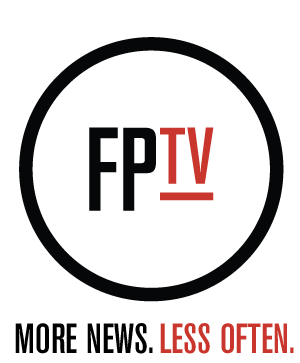Visual Vernacular: Huidi Xiang
Huidi Xiang, “Big Toe and Its Trash Toys,” 2025.
Born in Chengdu, China, Huidi Xiang has expanded her love of design and visual art over the course of her current collegiate career at Rice University. A double major in both studio art and architecture, Xiang brings together elements of sculpture, photography, and video to test conflicting ideas along with displaying the outcomes of visual experiments. Private emotion, public domain, personal interpretations, and subjective feelings all flow together into a broader context transmitting straight to the viewer. During her time at Project Row Houses this summer, Xiang has taken these artistic concepts and expanded them into the thoughts of community.
Fully utilizing the function of her studio space of a house, Xiang examined herself as an outsider infiltrating into a community. As the summer progressed, she grappled with the concept of community formation or destruction among other individuals. Collecting found objects and merging them with personal items, she will reveal a space transformed during the Project Row Houses Summer Studios Opening this week. Four different parts of installation will represent four rooms in a house: kitchen, bedroom, bathroom and living room. Each item placed in the home will be a representation of a certain piece of memory Xiang associated with each room during the summer. Xiang took the time to answer some questions while she works on the final touches of her studio turned artistic study.
Free Press Houston: How has art been present in your life through the years?
Huidi Xiang: My mother is a painter who is doing traditional Chinese paintings and calligraphy. Even though I never learned art from my mom or others throughout my childhood, I have had a strong interest in art naturally as since I was very little I was under the influence of my mom. I am an Architecture and Studio Art double major junior student right now at Rice University. It is at Rice that I “officially” began to learn art and design. Actually, I first started as just an architecture student and then during the second half of my freshman year, I decided to major in art as well. For me, I think architecture design is more about solving others’ or the society’s problems, while art helps me to solve my own problems, emotionally, psychologically, philosophically. How could I solve others’ problems with so many questions in my own mind? I sort of have such a childish question in my mind and I feel good that I didn’t drop architecture. I think studying both of them actually help me to understand my work — no matter art or design — better, even though nowadays people intend to separate these two disciplines so drastically. Both encourage me to have sensibility and logic at the same time while viewing my art in a private setting as well as a public domain. I consider art as a way for me to explore myself and to perceive the world as an individual. Art is a hands-on experience bringing forth profound thinking for me.

Huidi Xiang, “The Fear,” 2025.
FPH: What type of medium do you mainly work in and how do you add your own concepts to it?
Xiang: I mainly do sculpture. One of my main interests is to test different materials in my work. I think as a student I am still in the progress of searching. For now, I am particularly interested in using found objects in my work, but I always manipulate or transform these found objects to alienate it from its original form and function to add multi-layers of meaning as well as materiality in my art. The process usually starts from an intuitive connection to the object and then a continuing thinking and shaping process towards the object. This is how I add my own language onto these found objects, which already have their own strong statements on their own.
FPH: How did you use your workspace as an installation and how did your own objects and treatment of objects in the space transform into your final presentation?
Xiang: Space is always important for me and that’s why I have a strong interest in Project Row Houses. PRH is special because it is not a neutral, or what we say, a traditional “white cube” to contain the artwork. For the Project Row Houses, each of us is actually using a shotgun house as our studio space as well as the exhibition space. Instead of thinking of it at first as an art space, I literally consider the space as a house, so I create four installations to subtly and conceptually represent a kitchen, bathroom, living room and bedroom. Each installation is a combination of furniture and small objects I created out of my memories and experiences related to this community and this summer.
During the studio period, I actually worked on the furniture I finally put in the exhibition. The interesting thing is I had a plan, then I prepared the material at my school, and finally I brought the pieces from the school to PRH to assemble them. Due to the influence of the shotgun house, the way I assembled the work and the way I arranged all the items actually changed from my plan so the final presentation of my work is very specific to the surroundings.

Huidi Xiang, “The Grid,” 2025.
FPH: What has your experience been like from the aspect of collaboration at Project Row Houses?
Xiang: I mean, the first thing for sure is that I gain a joy of doing art at PRH. I just enjoyed making art. I appreciate Project Row Houses giving me such valuable chance to create. To work with our mentor Kaneem Smith, Project Row Houses people, and all my studio mates is an experience full of joy. They have been so willing to help me.
It is definitely an eye-opening experience, because this is my first time to do art and exhibit it outside campus. Without a car, I have to bike to PRH every day under the heat of Houston, but it actually gives me more time to interact with the community. Previously my work is more about private experience, subjective feelings. It had an inward intention. But PRH is more about creating community-based art. Therefore, this summer helps me to expand my horizon. I think this work I am creating here is totally different from my earlier work because it is an outward statement an individual has towards the community and a feedback that I have towards the world. It’s good because I still keep my own position in art while absorbing the environment surrounding me. I consider this experience as a really positive first-step process for an outsider like me to acquire the community.
The Project Row Houses Summer Studios Artist Talk happens this Thursday from 6 pm to 8 pm with the Opening + Community Market slated for this Saturday from 4 pm to 7 pm. Both events take place at Project Row Houses (2521 Holman).











